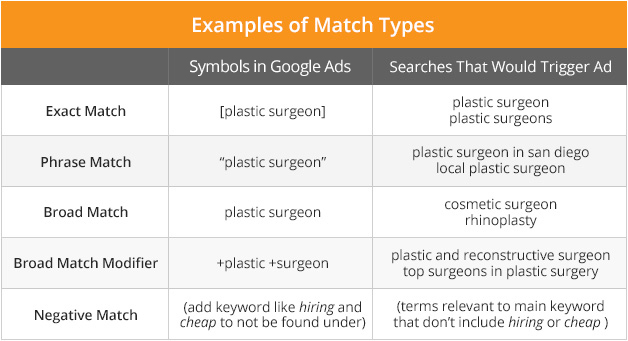Learning Hub | Paid Search Advertising
Make AdWords Do The Talking For You
January 25, 2021 | Jon Teodoro

Most brands are fully aware of the power AdWords has to drive traffic. But what they overlook is its adaptability—and their own ability to spend more wisely to lower their cost per conversion. We consistently find ourselves recommending several ways that brands can customize their AdWords experience to get the most out of their budget, increasing the number of inbound calls and leads with a more intuitive AdWords approach.
Five themes rise to the surface:
Who you are is also who you’re not.
In defining what your business is about, it’s equally important to define what you’re not about. That goes for the way you show up in search results. By identifying negative keywords, you can weed out phrases that aren’t true to your brand and avoid wasting your ads on people without purchase intent. They’re unlikely to buy your product if they’re looking for something completely different.
For example:
- If you’re a board games retailer, you don’t want traffic from people looking for video games. That’s not a fruitful click-through.
- If you sell in-person real estate courses, leveraging negative keywords like “free” or “online” (terms you don’t want your business to be associated with) will keep your ads from showing up for people looking for…free online classes.
It’s not just where they come from, it’s where they land.
If your ads are the front door, your landing pages are the maître d’. It matters how you greet your site visitors. In order to drive the highest conversion rate, you need to test and learn.
A/B testing allows you to trial copy length, placement of forms and calls to action—whether above or below the fold, for example—and overall layout to see what works in terms of generating leads or inspiring customers to make a purchase. This may vary by promotion, season, or type of customer.
A tool like Unbounce allows you to run your own A/B tests and easily process the results to help guide your landing page design. One of the powerful tactics we routinely encourage is removing the navigation from your landing page. Given a limited window of user attention, you’ve gotta strike the iron while it’s hot, and omitting navigation on the landing page itself helps focus the user on taking concrete actions when they visit your site.
There’s ready to click and there’s ready to buy.
With cost per click (CPC) ads, Google’s algorithm can tell you who’s most likely to click through. That’s nice, but it only gets you so far. We encourage brands to venture into cost per action (CPA) ads in order to find out who’s most likely to convert, letting them optimize ads to move the needle further.
There are a few key steps to ensure conversion tracking is firing on all cylinders:
-
- Tag all forms with the conversion-tracking pixel
- Install call tracking to measure phone calls coming from Google AdWords
- Configure the right attribution model (to give credit to the right ad, given that consumers may engage with multiple ads you’ve promoted)
- Use position-based attribution to cover all of your touchpoints
Overall, the willingness to experiment is how you maximize the return on your AdWords investment.
Give them more opportunities to find you.
Some search phrases are no-brainers. However, using keyword match types allows you to broaden the scope. Include like phrases, modified versions of phrases with the same meaning, and phrases that include additional words but are still entirely relevant. For example, match types for “kids pajamas” might include terms like “buy kids pajamas,” “kids clothing,” and “cozy wear for kids.” You can then track your highest-performing search terms and build ad campaigns around them.

Lowering your bids isn’t lowballing, it’s negotiating the terms.
AdWords exists as a bidding system. That means it’s not just a buyer’s or a seller’s market but one intended to find the happy medium between both. Over time, brands should steadily experiment with decreasing their bids while closely monitoring ad performance to find the sweet spot of cost vs traffic. You should also consider making bid adjustments, which raise your bid incrementally while ensuring that more people with whom your ads perform well see these ads.
In both cases—lowering bids AND bid adjustments—you can tailor your approach by demographics, devices, times of day, and other key factors to get the most bang for your buck. This allows you to make up for the cost of segments that don’t perform well by reinvesting your money into segments that do.
The world of ecommerce is far from static, and every brand’s AdWords strategy should have the flexibility to move with the moment. You’re more than justified in adjusting the dials on a regular basis to find the right balance.
